There isn’t just one way to weave in ends. There are many ways. And as long as you can’t make out well where you’ve woven them in or have ends poking through to the front, you don’t really have to change the way you are doing it. But different projects create different fabrics with other circumstances. And those might require a different way to weave in. Take lace for example, or work with slippery yarn like cotton or silk.
General tips
Wash the knitted piece before cutting the ends too short. The knitted fabric often changes a bit after washing – which is why you are supposed to measure a gauge swatch after washing it. If you’ve cut your ends too short before you washed your project, the ends may not fit quite right anymore and wriggle through to the front or at the very least slip out a bit.
Whenever possible try to join a new ball of yarn close to an edge that will be sewn together later. I prefer to tug my ends into seams whenever possible. Seams aren’t as flexible as the rest of the fabric and the ends can never push through to the front if you weave them in on the inside ridge of a seam. I also don’t need to do quite as much to secure the yarn, slipping it through a few stitches is usually enough.
If you don’t like to weave in ends at all, look at Spit Join, Russian Join or working in ends as you knit. But Spit and Russian Join will only work if you are only using one color. You could also use the Magic Knot method but I personally dislike it. As the name suggests, you make a knot (actually two) in your yarn ends and secure them that way. However, at least in knitting knots have a way of popping through to the front and the knot is visible.
The Elizabeth Zimmerman Method
This is possibly the simplest way to secure ends into your knitting. And it’s half of what I learned to do as a child and how I still often do it. When you want to join a new ball of yarn, you simply work with both strands for a few stitches and then snip the tails short. So, it’s not precisely weaving in ends; you work them in as you knit.
There are drawbacks to this method. The double thick stitches can be visible – however, I find that I often can’t make them out. And you can try and place them where they won’t stand out. But what I find much more troublesome is that often the ends will still wriggle through to the front after a while. That’s why it’s only half of the method I’ve learned when I was young.
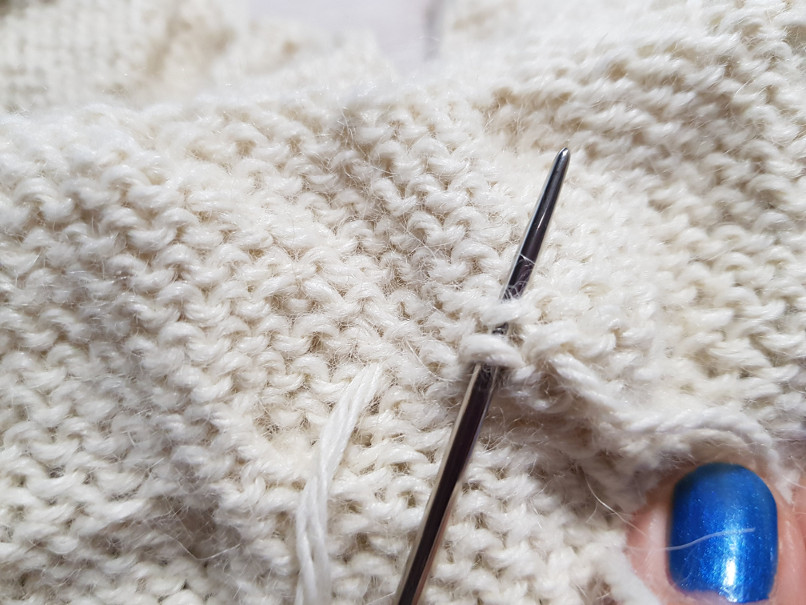
Weaving in ends with duplicate stitch – my new favorite method
Weave in Ends in Stockinette
The method I’ve been trying out recently is to weave in ends using duplicate stitch on the wrong side of the work. This works wonderfully. It distorts the fabric even less than my standard method until recently – weaving them in horizontally – would and has now become my favorite way to do this.
It is also possible to do this on the front of the work, but I can’t bring myself to do it. I struggle with the idea of weaving in on the front. And it would only work in stockinette anyway.
You can also weave them in horizontally (there are a lot of ways to weave in explained here, you will have to scroll down some) – which is what I’ve done for most of my knitting life. It’s easy and quick. On the back of the work, the purl stitches form lots of frowns and smiles. All you do is weave in up through frowns and down through smiles for a few stitches, and then you move up or down to the next row and go back the way you came. If you go back and forth like this for two or three rows that should secure your ends well enough to stay in place.
Another way to weave in ends is to do it vertically on the front (same link, you will have to scroll). You pull the ends under the bars in the middle of the stitch. This is especially useful for double knitting where you don’t have a wrong side but can neatly hide the yarn ends in between the two layers of fabric.
You can also weave in the ends in a diagonal line (same link, more scrolling) on the wrong side. It works, but I don’t like it quite as much as the duplicate stitch method. When you’re stretching the fabric – as you do with socks and hats and the like – the yarn can slip out of the last stitch it was pulled under and then hang loose on the back of the work.
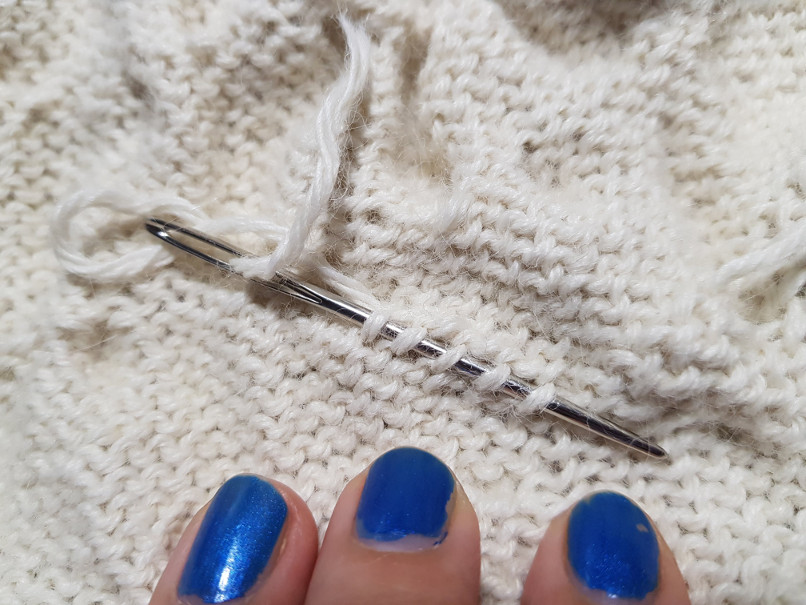
Weaving in ends diagonally
Weave in Ends in Garter Stitch
In garter stitch, it works much the same as in stockinette. You weave in on the wrong side only, however. You can either use duplicate stitch on the wrong side while ignoring the knit rows in between the purl rows. Or you can weave in horizontally or once again diagonally.
Weave in Ends in Seed Stitch
In seed stitch, it’s a bit different. I’ve never needed to weave in ends in seed stitch before, so I had to look this up, and I came across one way described by Staci of Very Pink Knits. You weave in the ends on the backside going down and up through the purl bumps at a 45° angle. Watch her video, it’s very well done, and this method is a lot easier to understand when you see it.
Weave in Ends in Ribbing
I know of three different proven to work ways to weave in ends in ribbing.
You can either go up on the column of stitches always in through the right side – like in this Very Pink Knits video. And then down again always in through the left side of the stitch.
Or you can go up one column, alternating between going in through the right and left and then down again along the next column of half stitches still alternating between going in through the left and right. That’s how I’ve always done it. I couldn’t find a video, so please look at these photos below to see how I do it.
Or you can once again weave in the ends by going vertically through the bars in between the stitches and at the center of the half stitches on the right side.
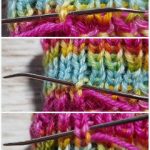
This is how I do it on the wrong side of ribbing. Becomes invisible after washing. Click image to make it larger.
Weave in Ends with Cotton
Now when it comes to slippery yarn like a lot of cotton or silk it gets tricky. The nature of these fibers makes it difficult to secure the ends. If you are working a sweater or top – or anything with seams – try to hide and weave in the ends in the seams. I’ve found that the best way to deal with them.
If that is not possible then the only described method I can find is to weave in normally for a few stitches and then to split the yarn, weave it in and knot it and to repeat that until you have no more plies left. (Here is a video describing this method and one from Very Pink Knits doing something very similar.)
I dislike making knots in my yarn ends to secure them. But I haven’t found a better way either. I just don’t knit much with cotton or silk. Also, this method won’t work for any one-ply or ribbon yarn. You could join a new ball of yarn while knitting with a magic knot but that wouldn’t be an improvement either (above in General Tips I explained why). If any of you know of a better way or have an idea, please let me know! I’ll include it in this post.
Weave in Ends While Knitting
You can weave in the ends while knitting. It works similar to carrying floats on stranded knitting. Once again Very Pink Knits has a video about how to do that.
I would suggest doing that with pure wool that didn’t get the superwash treatment. The type of yarn you would normally use for fair isle knitting. During washing, the yarn tails should slightly felt and stay securely in place.
Weave in Ends in Colorwork
The above method of working in the ends while you’re knitting would be my preferred method stranded colorwork. If you don’t want to do that, try to weave in the ends only into stitches of the same color. Otherwise, you might be able to see it on the front of the work.
Weave in Ends in Lace
Lace doesn’t make it easy to weave in ends. It is often worked at a loose gauge which makes hiding the yarn tails more difficult. You can try to find a place with a couple of knit stitches together and use duplicate stitch to weave in the ends.
Another often used method is to weave in the tails along an edge – preferably a cast on or bind off edge. I don’t like this, however. For me at least those tails will often wriggle through to the front after a while.
My preferred method for lace is to have no ends to weave in at all. This works well when you are either using a yarn with multiple plies or one that felts. With the latter, you can use the Spit Join well, and with the first, I would use a Russian Join.
How do you like to weave in ends? Which method was new to you? How do you work in tails of slippery fibers? Please let me know in the comments below.
You can find more on weaving in ends in Anne Hanson’s class on Craftsy: The Essential Guide to Finishing Handknits (*) and the book The Knowledgeable Knitter (*) by Margaret Radcliffe
Affiliate disclaimer: This post contains affiliate links (links marked by (*)). That means that at no extra cost to you I will receive a small compensation should you choose to purchase after clicking on such a link. Please, read this for more details.
Next week’s post will not just be interesting for you – but for me as well. I will show what kinds of projects besides socks you can knit with a single skein of sock yarn. Both for variegated and solid or semisolid yarn. I have so many single skeins of sock yarn and I know many of you do, too. It will be a little late but I should have it up by Sunday.
Did you enjoy this post? Then please share it on Pinterest!
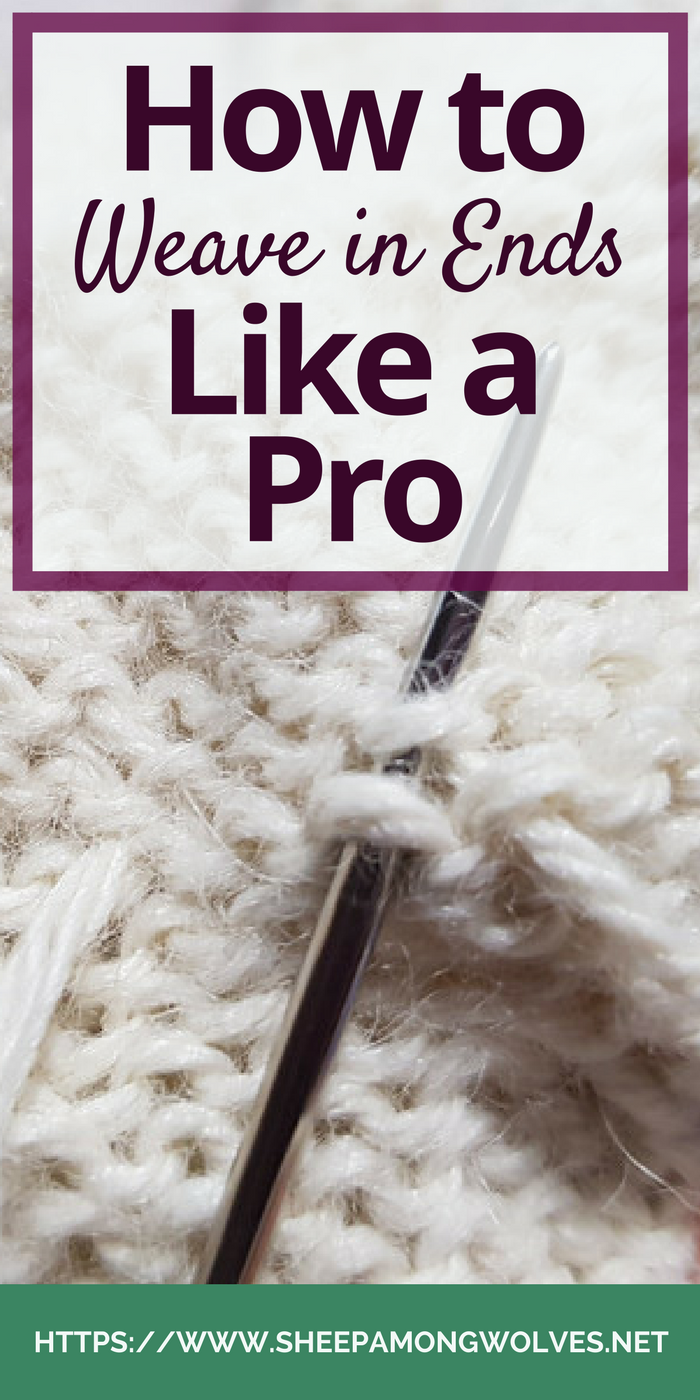

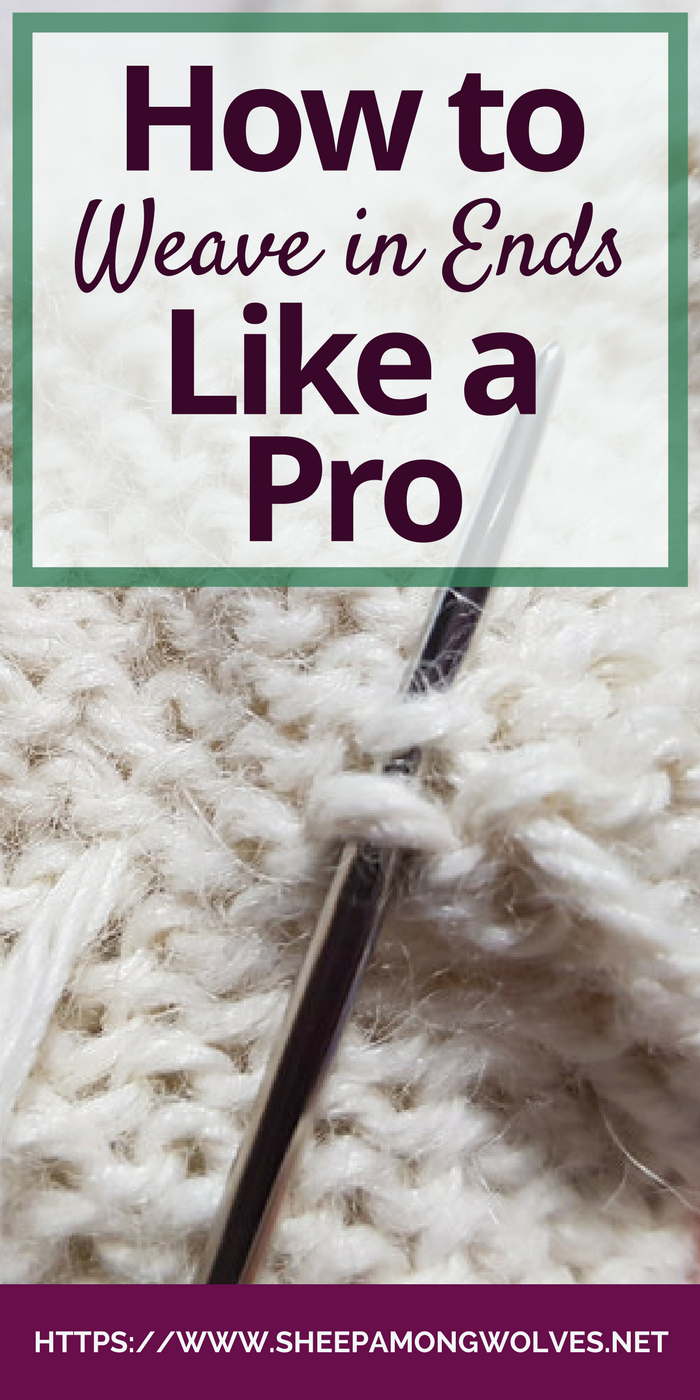
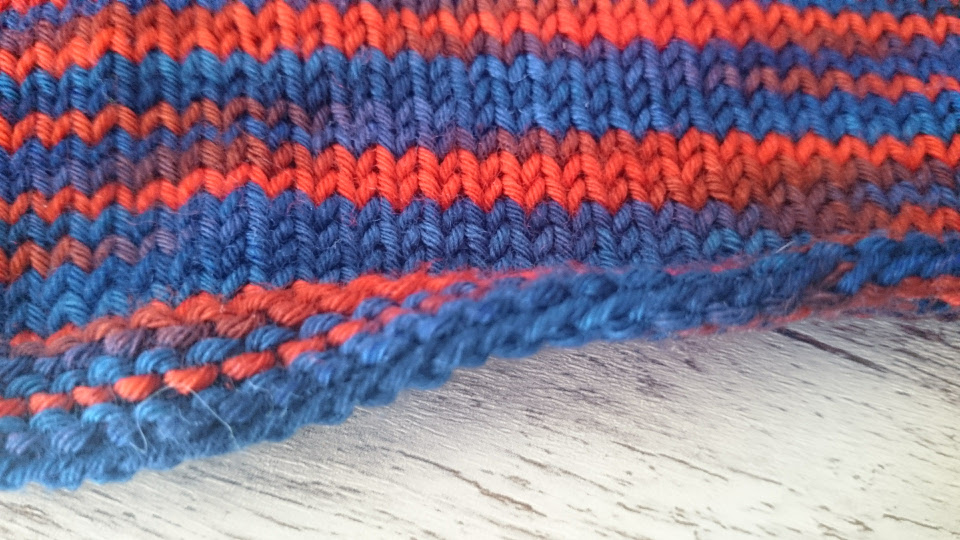
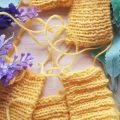
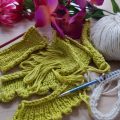
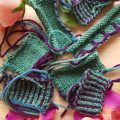
For slippery yarn, or ribbon, I use a matching thread and sew the ends together with a few stitches and a buttonhole stitch over the join.
That’s a great tip. Thank you, I will try that next time! I definitely like that idea better than making knots in my working yarn.
Hi Gayle, are you able to provide more information on this method of sewing in tails. I can’t find instructions online and have knitted a cotton baby romper that I need to sew the tails in of and would like to do as you suggested.
Any help would be gratefully received.
Thanks
Really useful post. Thank you!
Happy to hear you think so! Thanks for the feedback.
I made a Fun Fur hat. I knitted it. I fell in love with it. I made it in different colors. I can fold it in my pocket. But, now I have to make a pattern. I did not have a pattern. I measured around my head. Then I measured where I wanted it to stop on my head. I used a #10 knitting needle and made my hat. It came out really nice.
Do you know of anyone having instructions for a Fun Fur hat?
Filomena
I just did a quick search on Ravelry and came up with a few patterns. It will be difficult to find one that is exactly like the head you knit. However, since you’ve knit it successfully multiple times it shouldn’t be too hard to write down what you did. If you want to write a pattern, you have to know your gauge, though. I know counting stitches isn’t fun with faux fur, so you may have to knit a gauge swatch where you know how many knit stitches you have in a row in order to be able to measure it properly.
I hope I could help you a bit.
Hi my question is this..is it possible to weave in ends as I go with intarsia knitting? I am making a baby blanket with sheep that uses that fuzzy baby yarn and it impossible for me to see my stitches when weaving in tails and am afraid it will unravel.. If you could PLEASE help me with this I would really love you..lol Could you please email with your responce at dmurphy@everus.ca
Hmmm, tricky. I haven’t found anything specific for this. I would say you could use the standard method. That usually works quite well on fair isle – because that’s how you catch floats in fair isle anyway. As long as the fabric is not too loose, the ends should be visible. Another idea would be to use the same technique over several rows and only ever weave in as you go while working with the same color. I’ve never tried that out, though. It might, in the end, be more trouble than weaving them all in with a needle.